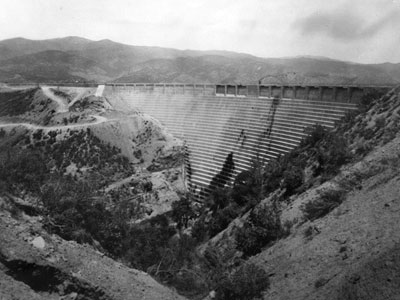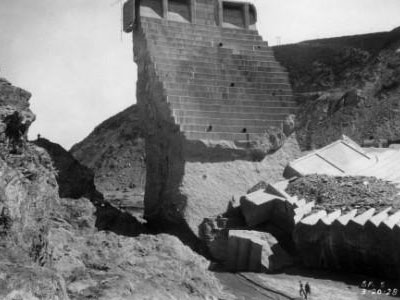About EAPs
California's Massive Fatal Dam Failure
Dams began to be regulated in California as a direct result of one of California's worst catastrophes — the failure of the 2-year-old, 185-feet-high St. Francis Dam in Southern California one chilly night in March of 1928.
A wall of water, mud, trees, and boulders crashed down the San Francisquito Canyon into the Santa Clara River Valley on its 5 ½-hour rampage to the Pacific near Oxnard. The 70-foot wall of debris laid bare a 2-mile-wide swath 70 miles long, killed more than 450 people, left hundreds of others homeless, destroyed 900 houses, many bridges and roads, and 24,000 acres of farmland was swept away. In California's history of disasters, this event ranks second only to the San Francisco 1906 earthquake.

St. Francis Dam Failure

St. Francis Dam Failure
A state commission reported that the dam failed because it was ill-built in a geologically unstable site.
The failure of the St. Francis Dam prompted the State Legislature, on August 14, 1929, to create what is today the Division of Safety of Dams (DSOD), under the California Department of Water Resources.
Division engineers and engineering geologists review and approve plans and specifications for the design of dams and oversee their construction to ensure compliance with the approved plans and specifications. Reviews include site geology, seismic setting, site investigations, construction material evaluation, dam stability, hydrology, hydraulics, and structural review of appurtenant structures. In addition, Division engineers inspect over 1,200 dams on a yearly schedule to ensure they are performing and being maintained in a safe manner.
Read more about the St. Francis Dam, its engineering, those who built it, and the calamity that made it the worst man-caused disaster in America in the 20th Century.
